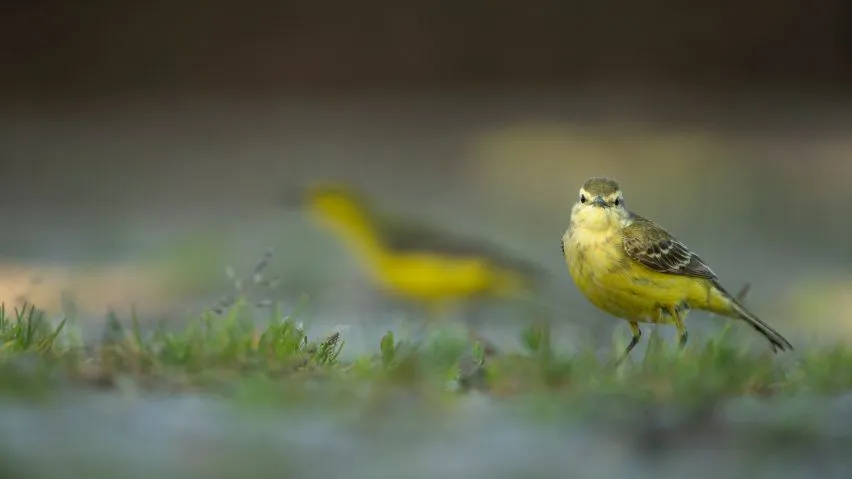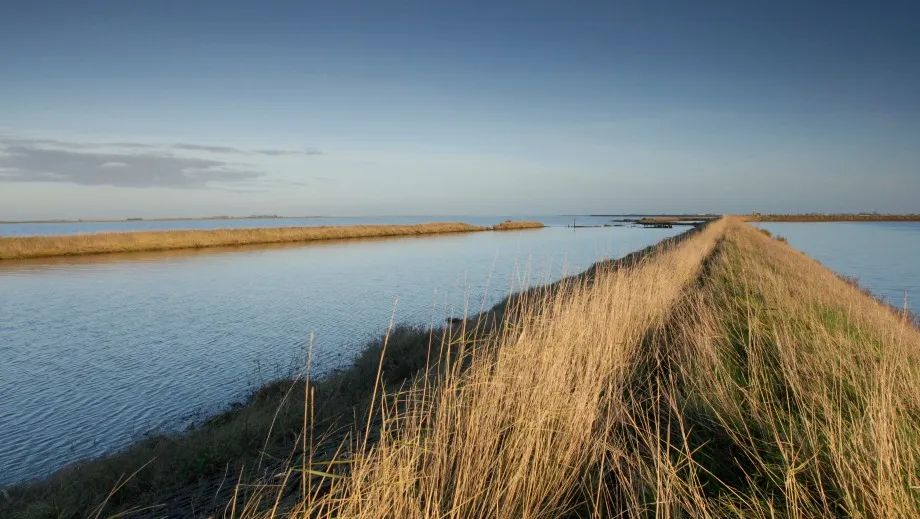Move Earth to create a haven
On a windy stretch of the East Essex coast lies a labyrinth of mudflats, saltmarsh and lagoons where thousands upon thousands of birds reside. Today it looks entirely natural. But this ‘lost landscape’ only exists because of a partnership between the RSPB and the people behind one of the world’s largest infrastructure projects.

On this page
A lunar landscape
It’s safe to say Rachel Fancy’s first day at the RSPB wasn’t your typical first day for a nature reserve manager. When she started, 13 years ago, the site at Wallasea Island was in the middle of its transformation from low-quality arable farmland to a huge nature reserve twice the size of the City of London.
She said: “When I first arrived it was a bit of a moonscape. Every time you went out there you had to get into bright orange health and safety clothing – high-vis, helmet, gloves and all the rest of it. There were around 20 dumper trucks trundling about taking material around the site, excavators, rollers and other equipment everywhere.”

Crossrail
The ‘building site’ Rachel stepped foot into was the result of a partnership with Crossrail who were creating the new Elizabeth Line in the capital. They first got in touch with the RSPB in 2008 with an offer of millions of tonnes of earth which was being burrowed from beneath London to create the 13 miles of twin tunnels. The RSPB and partners saw this earth as a golden opportunity to transform Wallasea Island from flood-threatened low quality farmland into the sort of intertidal habitat which once dominated the Essex coast.
Moving mountains of mud
Around 3.2 million tonnes of the earth were shipped to Wallasea. It was used to raise much of the island above sea level and create a mosaic of lagoons, marshland and bays. This kind of landscape has disappeared from much of Essex and much of what remains is at risk of rising seas caused by climate change.
The ‘Wow’ moment
After three years of reshaping the landscape, the first part of the plan was complete. In a history-making moment, the old sea wall was deliberately breached in July 2015 for the first time in 400 years and seawater began seeping back into the landscape.
Rachel said: “It doesn’t gush on, it comes on like a tide. But to slowly see the water coming onto the land for the first time in hundreds of years was amazing.
“As the project goes on you then get a great feeling the first time a different lagoon is filled, seeing the very start of a habitat for wildlife being created right before your eyes.”

Shifting sands
Over the next couple of months, sediment, nutrients, seeds and creatures were brought in by the tide and began colonising the mud. By the second winter, some plants and minibeasts were well established, with large flocks of birds coming to rest and feed.
Within two years, wintering bird numbers were at 12,000. Now numbers can hit 30,000, on some days, with big numbers of Knots, Dunlins, Redshanks, Lapwings and Bar-tailed Godwits. Together they can be seen forming a swirling, whirling mass as they flock together over the lagoons and marshes. Short-eared Owls, Hen Harriers and Marsh Harriers all patrol the skies, as well as Peregrine Falcons, kestrels and buzzards. But for Rachel, one of her favourite moments is the return of a summer visitor.
She said: “One of the concerns of the project was the new wetland habitat may not be as good for farmland birds, but this hasn’t been the case.
“I love seeing the Yellow Wagtails arriving back from Africa every year, it’s a sign spring is definitely here. That really makes me smile.”
Creating a wild space for people
With 15km of trails through wild coastal landscapes, Wallasea Island is now also a place for people. Rachel said: “It’s a huge benefit to local people, we have more than 30,000 visits a year now with people coming to enjoy the walks and the wildlife and the big skies. “They have somewhere really wonderful to enjoy the sea and the marshland, which you don’t always have access to in Essex. It’s been so beneficial in all sorts of ways.”

Setting an example
This recreation of a lost landscape wouldn’t have been possible without big business and industry working with the conservation sector. It was ambitious and complex – with DEFRA, the Environment Agency and Natural England all involved and many local communities, businesses and individuals all having a say.
Rachel said: “What was fantastic was that Crossrail looked for a sustainable way of getting rid of their waste material, they chose the sustainable option. This was a brilliant example of what can be achieved at scale when we work together. Hopefully it will inspire other similar projects in the future.”